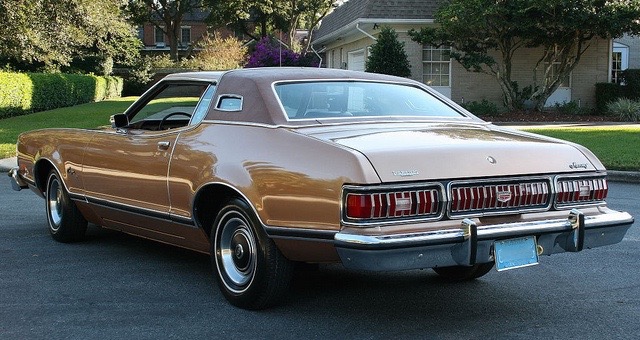The "mouth" part of a car's face is its grille, or opening(s) to admit cooling air to the radiator that is normally placed at the front. (Yes, mid / rear engine cars, air-cooled motors, and the new breed of battery-powered cars have different requirements, but for now they remain exceptions to the rule.)
A truly "functional" grille would take the shape of a rectangle, coinciding with the radiator's shape. To style this, various bars, moldings and other ornamentation might be added. At the other extreme would be grille openings with non-geometric outlines. Someplace towards the first example are grilles that have a geometric basis but are more elaborate than rectangles.
Such a case would be a six-sided grille in the form of a distorted hexagon. Both distinctive and quasi-"functional" in the sense noted above.
But a problem arises. A car's "face" serves to identify the brand, something usually highly important from a marketing standpoint. Therefore, it normally makes marketing sense to have a distinctive grille that potential buyers recognize. An exception is when a lesser make borrows elements of a more prestigious brand's grille in an attempt to increase prestige, though the result can be a confirmation of cheapness.
Another possibility is that different car makers stumble on a design more or less independently, possibly because there might well be a limited number of basic grille opening shapes and one has to use what one can use.
Below are presented the faces of 2016 model year cars from five different manufacturers, each using an essentially six-sided grille opening. Efforts were made to add touches of distinctiveness, but there remains the risk of reducing brand identity.
2016 Audi A4
Audi is the brand with the most prestige of those shown here, but I'm not sure that the other brands were trying to copy Audi.
2016 Dodge Dart
Well, this Dodge does have the Audi "slop over the bumper" motif that is more commonly seen on some Valkswagens.
2016 Ford Fusion
Some observers think the Fusion's grille was inspired by Aston Martin. Maybe.
2016 Hyundai Genesis G90
Maybe I'm changing my mind. The Genesis is Hyundai's attempt at creating a luxury brand, and that grille looks a lot like an Audi's without the interlocking rings.
Even lesser Hyundais seem to be getting the six-sided grille treatment. This is the 2016 Hyundai Sonata Hybrid.
2016 Subaru Legacy GT
This is a new grille shape for Subaru. It's too soon to tell if the brand is going to go all-out Audi, but it also can be found on the Subaru Impreza.























































